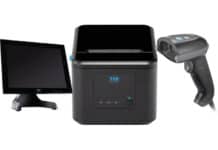By Indrajit Belgundi, Senior Director and General Manager, Client Solutions Group, Dell Technologies
Digital transformation is not new. Just 11 years ago, there was a significant transformation when employees and students started to bring their own devices to work and school known as ‘Bring Your Own Device’ (BYOD). BYOD initiated a sea of change in IT processes and policies to address end users accessing data with devices not owned, secured or managed by the organisation. As the first chapter of the digital workplace, BYOD introduced the notion of productivity regardless of location.
This past year, another digital transformation was necessitated by the need to, seemingly overnight, enable users to work and learn from anywhere. Many organisations had to accelerate their own digital capabilities to protect their employees, students, patients and communities. Instead of going to work, school, restaurants or out shopping, technology enables it to come to us.
It is time to reassess your organisation’s remote work and learning capabilities to create a digital workplace that is ready for anything and ensures seamless productivity from anywhere with a secure and agile infrastructure to enable it. Even though the location of work or school may look different, the user experience and productivity should remain top of mind. Employees, teachers and students all want faster, more secure, easier to use devices, collaboration and access to the tools they need to get their job done. IT needs automation and flexibility to deliver these requirements and enable innovation.
Personalised productivity from anywhere
Creating a digital workplace that enables end users to work or learn from anywhere with the productivity, security and the personalisation they need is vital. To do this, you need personalised user experiences and intelligent collaboration for seamless productivity. One of the biggest challenges to productivity is technology that works against the end user by being slow and unreliable, resulting in user frustration and downtime. Alternatively, a positive user experience leads to greater productivity, engagement, motivation and satisfaction.
Secure and agile infrastructure to support remote users
Optimising infrastructure with reliable and secure access to applications and data whether running on premises, in the cloud or both is necessary to support users who are working and learning remotely.
The threat landscape, which continuously grows and evolves, is taking advantage of the vulnerabilities caused by remote work and school. According to research conducted on behalf of VMware Carbon Black, there has been a 148 per cent spike in ransomware attacks on global organisations amid Covid-19.











